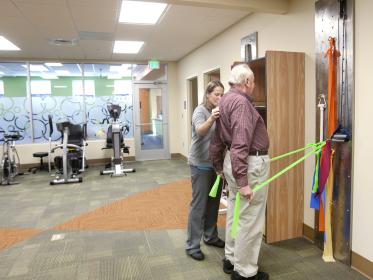What is Pelvic Floor Dysfunction?
Pelvic floor dysfunction refers to a wide range of disorders that occur with the muscles of the pelvic floor: the muscles may be too loose, but more currently are too tight, leading to urinary and defecatory dysfunction. For the majority of women, having a bowel movement is an automatic part of daily life and doesn’t require a lot of thinking or preparation. For others, however, defecation may prove very difficult as the muscles in the pelvic floor become tightened due to spasm, placing too much tension on the rectum and making it very hard to pass a bowel movement. The result may be an incomplete emptying of the rectal vault, which can lead to feelings of fecal urgency and several small, and sometimes painful, bowel movements per day. More troubling may be that residual stool left in the rectum may slowly seep out, leading to fecal incontinence.
When an individual needs to have a bowel movement, part of the levator ani muscle complex of the pelvis is designed to relax to allow defecation to happen without difficulty. The puborectalis muscle, which serves as a muscular sling, gives a certain degree of tone to the rectum and aids in continence by providing what is referred to as the “rectoanal angle.” If the muscle is overly tightened, or fails to relax during the bowel movement, the individual feels as if they must push and strain to fight against the force of the contracted muscle (non-relaxing puborectalis syndrome). This pushing and straining can lead to hemorrhoids and bleeding–even pelvic organ prolapse–if the condition is chronic.
How is Pelvic Floor Dysfunction Diagnosed?
The diagnosis of pelvic floor dysfunction starts with a careful medical history and physical exam. Many times, the patient will be asked to push and strain during the physical exam to determine the action of the muscles in question. Many times, the history and physical exam is sufficient enough to diagnose non-relaxing puborectalis syndrome. If the diagnosis is uncertain, your provider may order a study called a defecogram, in which the patient is given an enema with a liquid, which shows up bright white on x-ray. A special video x-ray records the movement of the rectum and associated muscles while the patient attempts to empty the liquid from the rectum. In an individual with pelvic floor dysfunction, the image may find that the muscles do not relax accordingly and may show retention of the liquid enema. The defecogram may also show evidence of a rectocele, which if large enough, can also trap stool, leading to defecatory dysfunction.
How is Pelvic Floor Dysfunction Treated?
Pelvic floor dysfunction may be difficult to treat depending on the etiology for the muscle contraction. Treating the underlying cause of the muscle contraction is the most important part of therapy. If the muscle is chronically contracted due to pain, then the pain should be addressed. If the muscles are contracted out of fear of sexual contact, such as an individual with a history of abuse, then the underlying emotional issues will be important in that individual’s treatment.
In addition, pelvic floor physical therapy and biofeedback may be utilized to improve coordination between the brain and bowel. Vaginal suppositories with low-dose Valium have also been effective in helping to relax the puborectalis muscle. The vast majority of individuals (around 75%) with pelvic floor dysfunction experience significant improvement with biofeedback. If the individual is noted to have an anatomic cause for their defecatory dysfunction, such as a rectocele or rectal prolapse, surgical intervention may be warranted.






